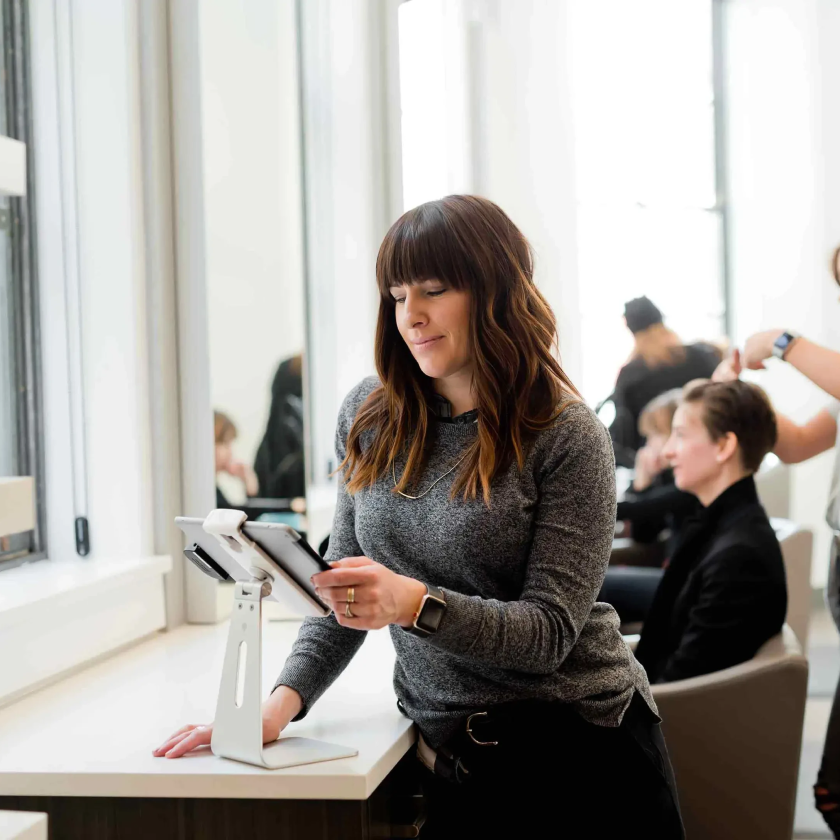Competition and teamwork are often seen as opposites in the workplace. But is this really true?
Stimulating your team to encourage their best work can be tough. Each team member will have different skills and motivations, meaning there is rarely a “one-size-fits-all” approach.
In many cases, team performance and productivity come down to workplace culture. In the past, performance in advertising was about being competitive. You had to be quick, bold, and always trying to improve.
But this is starting to change. As new technologies emerge that present more streamlined and innovative ways of working, many companies are realizing they can’t inspire their employees through a competitive spirit alone. This makes it more important than ever to recognize the power of teamwork and collaboration—working together and sharing values to bring out the best in everyone on your team. In fact, research by McKinsey suggests that improving communication and collaboration can increase productivity by 20-25%.
The bottom line is that, in today’s fast-paced climate, you need both competition and collaboration in the workplace—not one or the other. Before we talk about why your team needs both and how to use them, let's look at what competitive and collaborative team behaviors have in common.
What is “competitive” team behavior?
We see competition all around us every day. It happens in sports, between siblings, and in the workplace when people want to get a promotion.
Competitiveness is as much about your attitude as it is about your behavior. Certain personality types are more inclined to competition than others. But the actions you take to compete for resources or success at work won’t just be a result of your personal characteristics—they may also be influenced by your team.
Competitive team behaviors are dynamic. They are variable, changeable, and—perhaps most importantly—can be cultivated.
Competitiveness doesn't have to be about everyone fighting against each other, like in sales and marketing. It can also be about helping team members reach their goals, no matter how competitive they are.
Encourage your team to see competition as a way of taking risks and contributing to the success of the company as a whole. Pitch more out-of-the-box projects, using the collaborative features in Dropbox to share your ideas. You can also use Dropbox app extensions with your messaging apps to celebrate team success and improve morale.
Advantages and disadvantages of competition
Advantages
- Competition can be a key motivator to achieving results and goals
- In the face of problems that need to be solved, competition can encourage innovation, efficiency, and creativity
- This could be related to an overly complicated workflow, an untapped product market, or another common workplace problem
- Competition can support self-improvement
- For example, it can encourage team members to focus on being better than yesterday, last month, quarter, or year
- This is much more likely to help each person improve than if they are focused on being better than other people on their team
- Competition presents an important opportunity to observe and learn from peers—not just their success stories, but how they overcame obstacles or setbacks too
Disadvantages
- Competition can cause fear, stress, and anxiety when it's unfair or easy to manipulate
- There is the potential for competition to be exploited or bring about undesirable behavior
- A focus on gaining quick results may compromise quality and productivity
- Team members may come to resent competitiveness if it becomes too challenging or takes over other work priorities
Competitive behavior is all about balance—if team members are being pitted against one another to meet quotas or reach sales targets, it’s time to take a step back and rethink your approach.
When competition is just about beating others and not about getting better or coming up with new ideas, it can hurt how well people work together and how much they get done. To avoid team members feeling isolated because of a competitive work climate, it’s important to put individual desires aside.
Think: How can we reposition our competitiveness so it becomes mutually beneficial?
Instead of competing with your peers—who will have unique strengths and skills that benefit the wider team—implement competitiveness through key performance indicators (KPIs) or a similar framework for your goals. These metrics could be something small such as your content output per month, or a larger goal like client acquisition and retention.
When your competitive behavior focuses on success through continual improvement, there are no losers—only winners.

What is “collaborative” team behavior?
In many ways, it may seem like collaboration is the exact opposite of competition. Collaborative behavior involves a number of actions that are often missing in purely competitive environments. These include:
- Working with rather than against others
- Sharing knowledge and resources through frequent and effective communication
- A collective and unified effort to achieve project goals—and overcome obstacles that may emerge along the way
- Actively encouraging every member of the team to contribute to projects, including stepping in to help complete tasks they weren’t originally assigned to
Effective collaboration in a team often means putting your ego aside. Instead of hoarding potentially fruitful information for your personal advantage, you would relay it to your team so it benefits them as well.
Advantages and disadvantages of collaboration
Advantages
- Collaboration can help to build strong relationships and a sense of camaraderie within your team
- Collaboration can improve the division of work when roles are clearly defined
- The quality of the work is improved when each team member’s input is encouraged to be more creative and aligned with their individual strengths
- Compared to competitive behaviors, collaboration allows for a more transparent exchange of ideas and practical, on-the-job training
- Collaboration encourages more personal accountability
- The success of the team and your projects relies on every team member pulling their weight
Disadvantages
- Collaboration may lead to clashes within the team if team members have different methods and styles of working.
- This may be more likely to happen if multiple people want to be the lead on a project
- A collaborative climate may be exploited
- Some team members may be unwilling or refuse to put in the expected level of effort, knowing their peers will make up for their laziness
Say you’re a content creator and your team produces a range of media, from articles and white papers to videos and webinars. Your talents lie with writing and language, and less so in the visual side of things.
In a collaborative environment, your colleagues will probably turn to you to help with finalizing copy or tweaking the tone of voice—and trust that your insights will make the work better. This might be asking for your input by assigning tasks to you or requesting frame-accurate feedback on video projects.
Collaborating with your colleagues in this way is much easier when you have a centralized platform. It helps keep everyone in the loop, improves workflows, and ensures every team member can contribute to projects.

Why your team needs competition AND collaboration
The key to successful teams is creating a work environment that encourages teamwork. But it doesn't stop there—as we’ve seen, competition is still valuable, especially when it serves as the fuel for reaching a common goal such as problem-solving.
At the individual level, it can be good to “compete” with yourself.
Ask: “How can I be better than yesterday, or what resources are available to help me improve?” The answer to this may lie within your team.
Talking to your coworkers or asking for help can do more than just build the team. It can help to find opportunities to sell more or make new sales, help you communicate better with clients, and come up with more creative ideas for marketing. This can give your company an advantage over competitors.
Collaboration is about helping each team member be the best version of themselves. When you work together to manage projects effectively and support one another, this removes some of the fear of disappointing, which your colleagues you may feel. If you’ve ever experienced imposter syndrome, you’ll know how important this can be!
Let’s look at the bigger picture. Implementing collaborative team behavior can help you and your colleagues achieve better work-life balance. How? By stripping away the pressure to work in silos, setting clear goals or priorities, and making sure everyone is on the same page.
In turn, this gives you the space to explore competitive opportunities that can help you, your team, and your company develop.

Harness the power of competition and collaboration
With Dropbox, you can easily work together, edit, and share files with your team. It also helps create a main space for healthy competition.
Assign tasks in Dropbox Paper, collaborate on video projects in Dropbox Replay, and do so much more. Dropbox is designed to help you engage with your team members, keep each other motivated, and achieve your shared goals.


